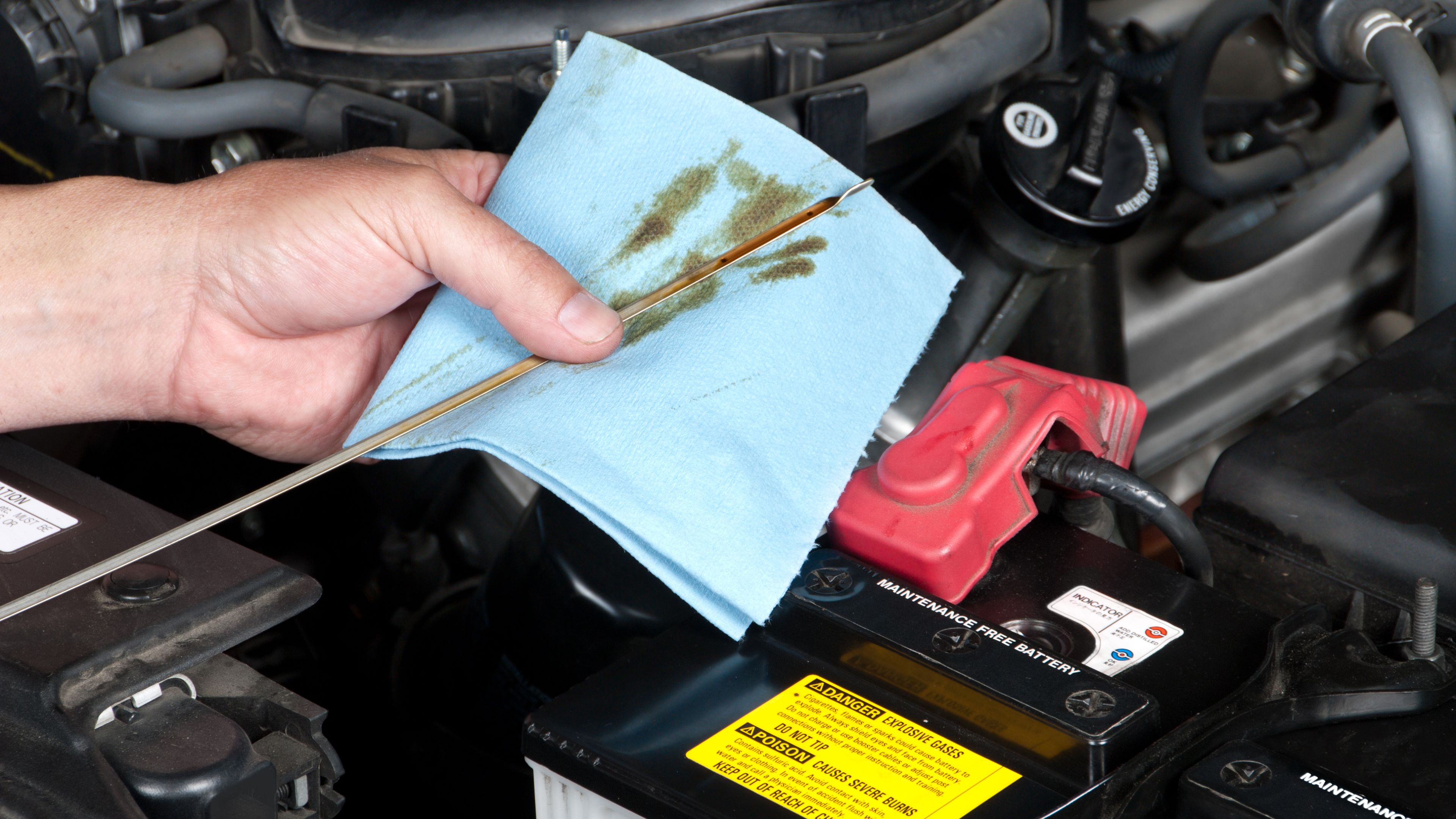To have a successful oil change, avoid these mistakes: neglecting proper maintenance schedules and using incorrect oil grades or filters. Getting regular oil changes is essential for a vehicle’s performance and longevity.
However, to ensure a successful oil change, it is important to avoid common mistakes that can hinder its effectiveness. This article discusses the key mistakes to avoid, such as neglecting maintenance schedules and using incorrect oil grades or filters. By following these guidelines, you can ensure that your oil changes are done properly, ultimately benefiting your vehicle’s engine and performance.

Credit: www.eautolease.com
Importance Of Regular Oil Changes
Regular oil changes are crucial for maintaining the health of your vehicle. One of the common mistakes to avoid is using the wrong type of oil. It is important to follow the manufacturer’s recommendations and use the correct oil for your vehicle to ensure a successful oil change.
Costly Engine Damage
If you neglect regular oil changes, the engine can suffer costly damage.
Replacing an engine is expensive, prevent this with timely oil changes.
Improved Fuel Efficiency
Regular oil changes lead to better fuel efficiency, saving you money.
Dirty oil increases resistance, using more fuel, incurring higher costs.
Credit: www.cbac.com
Choosing The Right Oil
Choosing the right oil is a crucial step in ensuring a successful oil change for your vehicle. With so many options available in the market, it can be overwhelming to know which one to choose. In this section, we will discuss two important factors to consider: understanding viscosity and the difference between synthetic and conventional oils.
Understanding Viscosity
Viscosity refers to the thickness or resistance to flow of an oil. It directly affects how well the oil can lubricate and protect your engine. Understanding viscosity is important because using the wrong oil viscosity can lead to poor engine performance and even engine damage.
When it comes to viscosity, oils are classified using a numerical code system developed by the Society of Automotive Engineers (SAE). This system uses a combination of numbers, such as 5W-30 or 10W-40, to denote the oil’s thickness at different temperatures. The first number before the “W” indicates the oil’s viscosity at low temperatures, while the second number indicates its viscosity at high temperatures.
Example:
| Viscosity Code | Recommended Use |
|---|---|
| 5W-30 | Most common viscosity for passenger cars and light trucks |
| 10W-40 | For older vehicles with high mileage or heavy-duty engines |
Synthetic Vs. Conventional
The next important factor to consider is the choice between synthetic and conventional oils. Synthetic oils are chemically engineered to provide superior performance and protection for your engine. They are designed to handle extreme temperatures and offer better viscosity stability compared to conventional oils.
Conventional oils, on the other hand, are made from crude oil. They are less expensive compared to synthetic oils but may not provide the same level of protection and performance. Conventional oils are suitable for most regular driving conditions, but if you frequently operate your vehicle in extreme temperatures or engage in heavy-duty driving, synthetic oil is a better choice.
Key points to remember:
- Synthetic oil provides superior performance and protection
- Conventional oil is less expensive but may not offer the same level of performance
- Consider your driving conditions and manufacturer’s recommendations when choosing between synthetic and conventional oil
Common Mistakes To Avoid
Performing an oil change is a routine maintenance task that every vehicle owner must undertake. However, even the most experienced car enthusiasts can make mistakes that can be detrimental to the health and performance of their vehicle. To help you avoid these common pitfalls, we have highlighted two of the most critical mistakes to steer clear of when changing your oil: over-tightening the oil filter and neglecting the oil drain plug.
Over-tightening The Oil Filter
One of the most frequently made mistakes during an oil change is over-tightening the oil filter. While it is crucial to ensure a secure seal, tightening the filter too much can lead to a host of issues. Over-tightening can cause the filter housing to crack or distort, making it difficult to remove during future oil changes. Additionally, excessive force on the gasket can result in it becoming misaligned or damaged, leading to oil leaks.
When installing a new oil filter, it is essential to follow the manufacturer’s instructions. Typically, this involves lubricating the gasket with a thin film of oil, ensuring it is properly aligned, and then tightening it by hand until it reaches firm resistance. Once the filter is securely in place, checking for leaks during the initial startup is crucial. Remember, it is always better to be cautious and avoid over-tightening rather than risking potential damage to your vehicle.
Neglecting The Oil Drain Plug
The oil drain plug is a small, seemingly insignificant component of an oil change, but neglecting it can have severe consequences. Failing to properly tighten or secure the drain plug can result in oil leakage, which not only diminishes the lubrication of vital engine parts but can also cause damage due to insufficient oil levels. Moreover, an improperly tightened drain plug can become loose over time, leading to a sudden loss of oil while driving.
When changing your oil, it is crucial to pay close attention to the oil drain plug. Ensure that it is properly tightened to the manufacturer’s recommended torque specifications. It is advisable to use a torque wrench to achieve the correct tightness. Additionally, inspect the drain plug and its sealing washer for any signs of wear or damage. If necessary, replace the sealing washer to ensure a reliable seal and prevent leaks.
By avoiding these common mistakes, you can ensure a successful oil change and contribute to the longevity and performance of your vehicle. Taking the time to perform this routine maintenance task correctly will not only save you money in the long run but also provide peace of mind knowing your engine is well lubricated and protected.
Proper Oil Change Procedure
Proper Oil Change ProcedureWhen it comes to performing an oil change, following the Proper Oil Change Procedure is crucial to ensure your vehicle’s engine runs smoothly and efficiently. From preparation and safety measures to the step-by-step process, each aspect holds importance.
Preparation And Safety Measures
- Ensure the engine is cool before starting.
- Gather necessary supplies: new oil, filter, wrench, drain pan, and gloves.
- Place the vehicle on a level surface and engage the parking brake.
- Protect your eyes and skin from oil contact.
Step-by-step Process
- Locate the oil drain plug underneath the vehicle.
- Place the drain pan below the plug and loosen it to drain the old oil.
- Remove the old oil filter and replace it with a new one.
- Dispose of the old oil and filter at a recycling center.
- Pour in the appropriate amount of new oil based on your vehicle’s specifications.
- Check the oil level using the dipstick and adjust if necessary.
- Start the engine and look for any leaks.
Signs Of A Poor Oil Change
Signs of a Poor Oil Change can lead to engine damage and reduced efficiency. It’s important to recognize these signs to ensure that your car continues to run smoothly and reliably. Look out for these common indicators that your oil change might not have been performed correctly.
Metallic Engine Noises
If you hear unusual metallic noises coming from the engine after an oil change, this could indicate a serious issue. Metallic engine noises may be a sign of low oil levels, poor oil circulation, or even metal-on-metal rubbing, which can lead to extensive engine damage.
Dirty Or Dark Oil
Dirty or dark oil immediately after an oil change can be a red flag. Fresh oil should be a clear amber color, and if it’s dirty or dark, it may indicate that the old oil was not fully drained before the new oil was added. This can lead to increased wear and tear on engine components and reduce the oil’s effectiveness in lubricating and protecting the engine.

Credit: www.hertz.com
Frequently Asked Questions For Mistakes To Avoid For A Successful Oil Change
What Not To Do When Changing Oil?
To avoid potential issues when changing oil, never forget to replace the oil filter. Be cautious of over-tightening the oil drain plug. Don’t use the wrong type of oil for your vehicle. Avoid spilling oil on the engine or other components.
Make sure to properly dispose of the used oil.
Is It Possible To Mess Up An Oil Change?
Yes, it is possible to mess up an oil change if not done correctly. It’s important to follow the proper steps and use the right tools to avoid damaging the engine or creating leaks. If unsure, it’s best to consult a professional or refer to the vehicle’s manual for guidance.
How Do I Know If My Oil Change Is Successful?
To determine if your oil change was successful, check for the following: oil level and clarity, absence of leaks, proper function of engine components, and smooth performance. Examine these indicators to ensure a successful oil change.
What Three Things Should You Check At Every Oil Change?
Check the oil level, quality, and filter during every oil change for optimal engine performance.
Conclusion
Regular oil changes are crucial for your vehicle’s health and longevity. By avoiding common mistakes like neglecting the oil filter or using the wrong type of oil, you can ensure smooth performance. Remember to stick to your maintenance schedule and follow these tips for a successful oil change every time.
